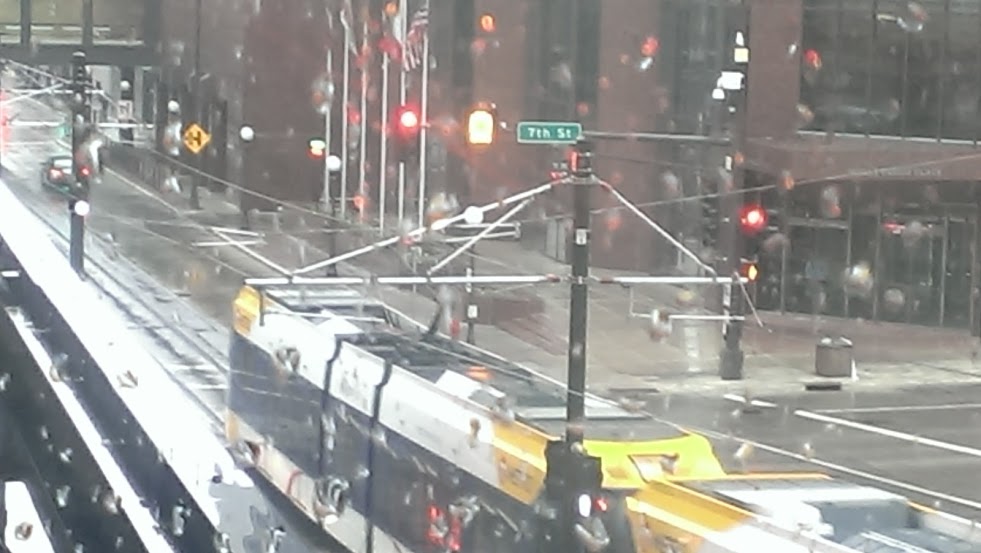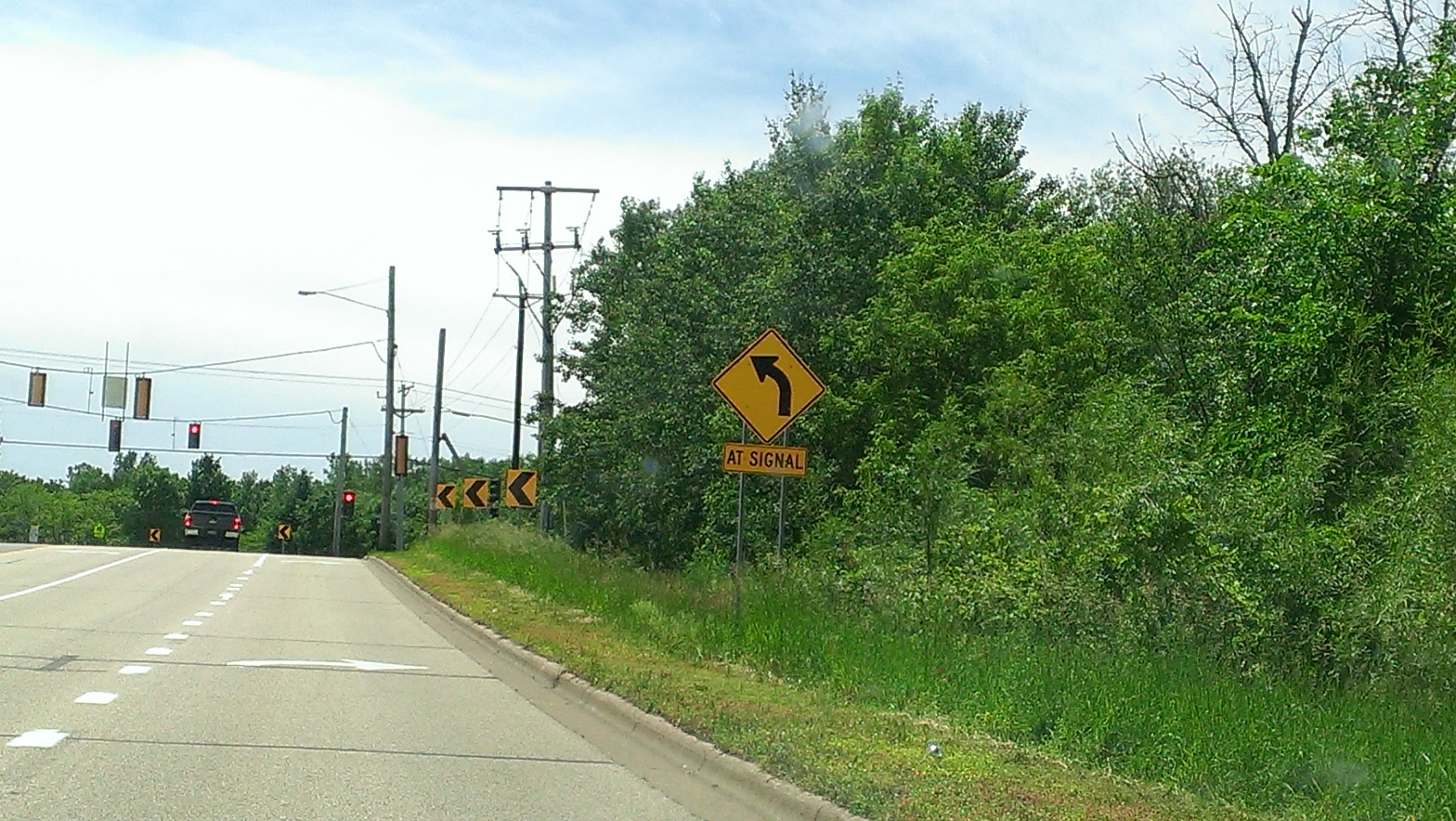Last evening, the new Green Line recorded its first car-train accident since service officially opened over the weekend. That didn’t take long.
Both train and car were traveling toward Minneapolis on University at Hampden when the car — of course — made an illegal left turn into the path of the train. It was the fifth accident since Green Line testing started in February and in every case the car’s driver did something wrong.
Usually it involves ignoring traffic signs or traffic signals.
How is this possible? Consider this picture (admittedly not a good one). You’ve got your red lights. You’ve got your picture of a train that illuminates above you at the intersection when the train has the right of way. In the next block, there’s a sign telling you you’re driving next to railroad tracks, because — apparently — the railroad tracks you’re driving next to don’t tell you that.
How do you miss any of those?
Maybe, it’s because you don’t see them anymore.
Out in my neck of the woods recently, traffic engineers started removing some signs. Why? Because there are so many of them now, people have stopped paying attention to them.
Over the winter, for example, a flashing 35 mph sign installed in a school zone was pulled because the drivers went much faster through the zone.
“To be perfectly candid, that [flashing] sign didn’t change drivers’ behavior. It didn’t slow them down. The data shows that,” Washington County traffic engineer Don Thiesen told the Star Tribune last winter.
Maybe there are too many signs warning us of things we don’t really need to be warned about, making our brains immune to the ones we should pay attention to.
I actually stopped, turned around, and had another look at this sign yesterday.
At first, I thought it was telling me I needed to turn left at the light. But it’s actually warning me the road turns to the left — slightly to the left — after the stop light. So did the six subsequent arrow signs.
But it wasn’t a hairpin turn and, really, only a Formula One driver really needs to know that the road bends slightly to the left.
The explosion of traffic signs also causes an arms race of ways to get your attention. Engineers add orange flags to them to get your attention (acknowledging that the sign itself won’t). Stop signs now get flashing lights and they work. A recent study found that the number of people plowing through stop signs dropped 30 percent where the LED-embedded signs were installed. People simply stopped seeing the signs that were at the same intersections earlier.
A few weeks ago I went through a red light at a downtown Minneapolis intersection. My brain — I guess — saw the light at the next intersection turn green. A few days later, I saw someone do the same thing in downtown Saint Paul.
None of this is to let drivers off the hook when it comes to responsible driving. I wouldn’t recommend getting rid of red lights or stop signs. But we might acknowledge that traffic engineers are overloading the brain with too much information and think about weeding out those signs we don’t really need.
Related Green Line: Twin City Sidewalks: No Bike Parking along the Green Line is Absurd.


